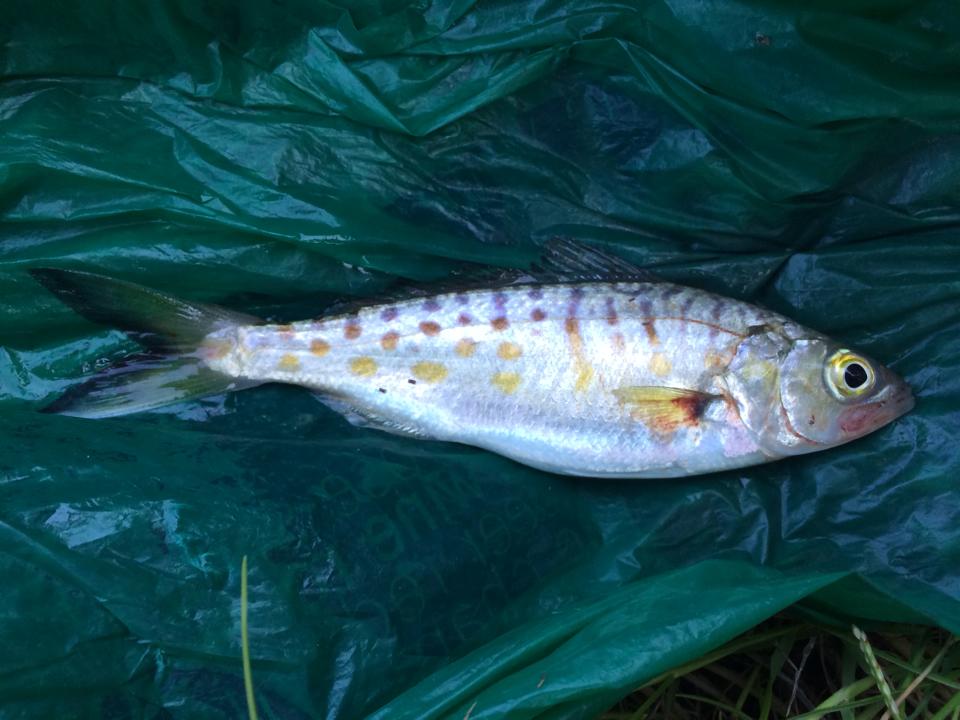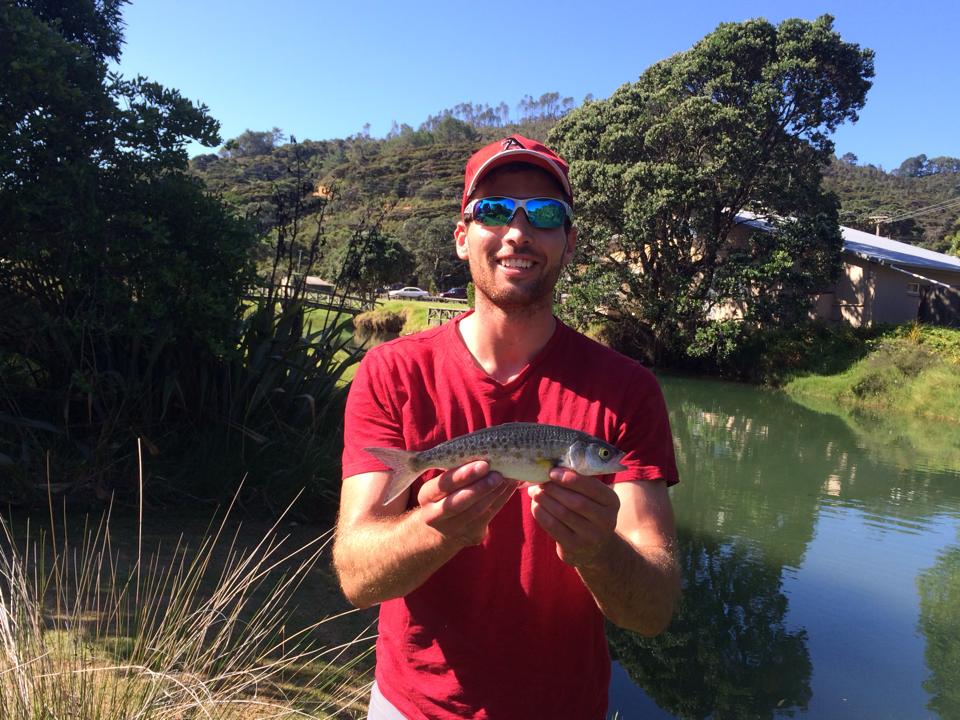
Species:Northern Kahawai (Arripis xylabion)
Location: Kuaotunu River, Kuaotunu, Coromandel, New Zealand
Date: February 25, 2014
Fishing in New Zealand is all about trout. At least, that’s what we’re told.
In reality, throughout most of the North Island, saltwater fishing is king. Snapper, Kingfish, and Kahawai are the big three for anglers in the brine, and everything else plays second fiddle.
While this saltwater trinity reigns supreme on the water, there is relative little information posted or printed about fishing for them.
The saltwater fishermen keep tight lips, and for that reason, I had no idea that the term “Kahawai” was actually comprised of four separate species until this year — five years after I returned from catching them.
***
While we’re dispelling rumors about this place, let’s start with kiwis, Kiwis, and Kiwis. Two aren’t native to the island; one is.
The first kiwi, also called Chinese gooseberry, is the fruit. It’s not native and comes from Asia.
The second Kiwi is term New Zealanders use to describe themselves. They are not native, either.
The warrior Maori arrived in the 1400s in large sea canoes and proceeded to kill and eat the actual natives of the island.
The other (predominantly white) Kiwis arrived about 200 years later and set a singular precedent among white settlers of that era by making peace with the Maori and affording them (almost) all of the same people privileges as Captain James Cook’s people.
No massive wars. No forced relocation en masse. No genocide. It was so unlike the settlement of North America, South America, Australia, and Africa it restores hope in humanity — however small that hope may be.
The third Kiwi is the native bird that gave the other two their names. The bird looks like a large kiwi fruit with legs and a long bill.
The renown of the bird ultimately led to then people taking the name, too.
I’d hoped to learn that Kiwis eat kiwis like an apple — skin on — as I do, but alas, they mostly used spoons to scoop out the delicious green or yellow (golden kiwis were way more popular there) flesh. So I’m a weirdo everywhere, apparently. Cool cool.
***
Rumors dispelled, let’s talk fish. I caught a juvenile Kahawai in the lower, brackish reaches of a river using the small beef scraps I’d used in hopes of catching an eel.
It was beautiful: somewhat like a trout in shape and canvas but with vibrant purple and yellow stripes and markings. I took a few quick photos, thinking it was a juvenile Kahawai, and left it at that.
The Kahawai I caught later on the trip were adults, much larger and more memorable, so the juvenile slipped my mind.
Then, in a frenzy to identify the Estuarine Triplefin, Species #56, and get the blog post done in time without having to list “Species #56 — Unidentified,” I stumbled across a research paper discussing the four species of Kahawai:
Arripis georgianus (Called Ruff or Australian Herring)
Arripis trutta (Called Kahawai)
Arripis truttaceus (Called Western Australian Salmon)
Arripis xylabion (Called Giant or Northern Kahawai)
All four species live around Australia and New Zealand. All four species spend most of their lives in saltwater, migrating up rivers and streams to spawn. All four species are notorious for fighting incredibly hard per pound.
Only A. trutta and A. xylabion are routinely found in Kiwi waters, but Kahawai are more common and more widespread than their Northern counterparts and apart from size, they are almost identical.
The main difference is the upper lobe of the caudal (tail) fin. Northern Kahawai have longer tails, typically representing more than 30% of the overall body length (not including the tail) while Kahawai‘s are shorter. Using software, I measured my fish from the old picture and found it to be roughly 34% of the tail-excluded body length.

It was a Northern, a Giant, an A. xylabion, a new species.
I owe my math teacher an apology. Math had come in handy.
#SpeciesQuest // #CaughtOvgard
Read the next entry in #SpeciesQuest here: Species #58 — Shortfin Eel.


Write more, thats all I have to say. Literally, it seems as though you relied on the video to make your point. You definitely know what youre talking about, why waste your intelligence on just posting videos to your site when you could be giving us something enlightening to read?
Man is said to seek happiness above all else, but what if true happiness comes only when we stop searching for it? It is like trying to catch the wind with our hands—the harder we try, the more it slips through our fingers. Perhaps happiness is not a destination but a state of allowing, of surrendering to the present and realizing that we already have everything we need.
Thank you for your sharing. I am worried that I lack creative ideas. It is your article that makes me full of hope. Thank you. But, I have a question, can you help me?
Virtue, they say, lies in the middle, but who among us can truly say where the middle is? Is it a fixed point, or does it shift with time, perception, and context? Perhaps the middle is not a place but a way of moving, a constant balancing act between excess and deficiency. Maybe to be virtuous is not to reach the middle but to dance around it with grace.
l9hw2c
4647st
c8g7uj
aqo9q8
dql7cc
What i do not understood is in fact how you are no longer actually much more neatly-liked than you might be now. You are so intelligent. You already know thus significantly with regards to this matter, produced me in my opinion believe it from a lot of numerous angles. Its like women and men aren’t involved until it?¦s something to accomplish with Girl gaga! Your personal stuffs excellent. All the time deal with it up!
b6pwvd
lji2t1
Your article helped me a lot, is there any more related content? Thanks!
nct2qs
gozwp6
9eqgan
n4nnwk
opc5lk
woeto8
sos6ml
ae9575
I like what you guys are up too. This type of clever work and reporting! Keep up the superb works guys I’ve added you guys to our blogroll.
A formidable share, I simply given this onto a colleague who was doing just a little analysis on this. And he in fact bought me breakfast as a result of I discovered it for him.. smile. So let me reword that: Thnx for the treat! However yeah Thnkx for spending the time to discuss this, I feel strongly about it and love studying more on this topic. If possible, as you turn into experience, would you mind updating your blog with more details? It is extremely helpful for me. Big thumb up for this blog publish!
I truly appreciate this post. I?¦ve been looking everywhere for this! Thank goodness I found it on Bing. You’ve made my day! Thank you again
dam4x6